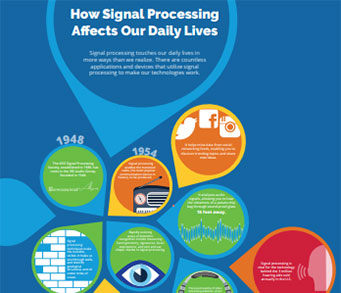- Our Story
- Publications & Resources
- Publications & Resources
- Publications
- IEEE Signal Processing Magazine
- IEEE Journal of Selected Topics in Signal Processing
- IEEE Signal Processing Letters
- IEEE Transactions on Computational Imaging
- IEEE Transactions on Image Processing
- IEEE Transactions on Information Forensics and Security
- IEEE Transactions on Multimedia
- IEEE Transactions on Signal and Information Processing over Networks
- IEEE Transactions on Signal Processing
- IEEE TCI
- IEEE TSIPN
- Data & Challenges
- Submit Manuscript
- Guidelines
- Information for Authors
- Special Issue Deadlines
- Overview Articles
- Top Accessed Articles
- SPS Newsletter
- SigPort
- SPS Resource Center
- Publications FAQ
- Blog
- News
- Dataset Papers
- Conferences & Events
- Community & Involvement
- Professional Development
- For Volunteers
- Information for Authors-OJSP
-
Home
Conferences Events IEEE Signal Processing Magazine IEEE SPL Article IEEE TIFS Article IEEE TMM Article IEEE TSP Article Jobs in Signal Processing Lectures Machine Learning Seasonal Schools Signal Processing News SPM Article SPS Distinguished Lectures SPS Newsletter Article SPS Webinar SPS Webinars SPS Webinar Series Webinar webinars
-
Our Story
What is Signal Processing?

The technology we use, and even rely on, in our everyday lives –computers, radios, video, cell phones – is enabled by signal processing. Learn More » -
Publications & Resources
-
SPS Resources
- Signal Processing Magazine The premier publication of the society.
- SPS Newsletter Monthly updates in Signal Processing
- SPS Resource Center Online library of tutorials, lectures, and presentations.
- SigPort Online repository for reports, papers, and more.
- SPS Feed The latest news, events, and more from the world of Signal Processing.
-
SPS Resources
-
Conferences & Events
-
Community & Involvement
-
Membership
- Join SPS The IEEE Signal Processing Magazine, Conference, Discounts, Awards, Collaborations, and more!
- Chapter Locator Find your local chapter and connect with fellow industry professionals, academics and students
- Women in Signal Processing Networking and engagement opportunities for women across signal processing disciplines
- Students Scholarships, conference discounts, travel grants, SP Cup, VIP Cup, 5-MICC
- Young Professionals Career development opportunities, networking
- Get Involved
-
Technical Committees
- Applied Signal Processing Systems
- Audio and Acoustic Signal Processing
- Bio Imaging and Signal Processing
- Computational Imaging
- Image Video and Multidimensional Signal Processing
- Information Forensics and Security
- Machine Learning for Signal Processing
- Multimedia Signal Processing
- Sensor Array and Multichannel
- Signal Processing for Communication and Networking
- Signal Processing Theory and Methods
- Speech and Language Processing
- Technical Working Groups
- More TC Resources
-
Membership
-
Professional Development
-
Professional Development
- Signal Processing Mentorship Academy (SigMA) Program
- Micro Mentoring Experience Program (MiME)
- Distinguished Lecturer Program
- Distinguished Lecturers
- Distinguished Lecturer Nominations
- Past Lecturers
- Distinguished Industry Speaker Program
- Distinguished Industry Speakers
- Distinguished Industry Speaker Nominations
- Industry Resources
- IEEE Training Materials
- Jobs in Signal Processing: IEEE Job Site
-
Career Resources
- SPS Education Program Educational content in signal processing and related fields.
- Distinguished Lecturer Program Chapters have access to educators and authors in the fields of Signal Processing
- Job Opportunities Signal Processing and Technical Committee specific job opportunities
- Job Submission Form Employers may submit opportunities in the area of Signal Processing.
-
Professional Development
-
For Volunteers
-
For Board & Committee Members
- Board Agenda/Minutes* Agendas, minutes and supporting documentation for Board and Committee Members
- SPS Directory* Directory of volunteers, society and division directory for Board and Committee Members.
- Membership Development Reports* Insight into the Society’s month-over-month and year-over-year growths and declines for Board and Committee Members
-
For Board & Committee Members
Popular Pages
Today's:
- Information for Authors
- SA-TWG Webinar: Channel Estimation for Beyond Diagonal RIS via Tensor Decomposition
- (ICME 2026) 2026 IEEE International Conference on Multimedia and Expo
- Unified EDICS
- IEEE Transactions on Information Forensics and Security
- IEEE Transactions on Multimedia
- (ICASSP 2026) 2026 IEEE International Conference on Acoustics, Speech, and Signal Processing
- Submit Your Papers for ICASSP 2026!
- IEEE Transactions on Image Processing
- Video & Image Processing Cup
- Call for Papers for ICASSP 2026 Now Open!
- Submit a Manuscript
- Conference Call for Papers
- Information for Authors-SPL
- IEEE Signal Processing Letters
All time:
- Information for Authors
- Submit a Manuscript
- IEEE Transactions on Image Processing
- IEEE Transactions on Information Forensics and Security
- IEEE Transactions on Multimedia
- IEEE Transactions on Audio, Speech and Language Processing
- IEEE Signal Processing Letters
- IEEE Transactions on Signal Processing
- Conferences & Events
- IEEE Journal of Selected Topics in Signal Processing
- Information for Authors-SPL
- Conference Call for Papers
- Signal Processing 101
- IEEE Signal Processing Magazine
- Guidelines
Last viewed:
- Marcel Nassar (The University of Texas at Austin), “Graphical Models and Message Passing Receivers for Interference Limited Communication Systems” (2013)
- Information for Authors
- Editorial Board
- About TMM
- IEEE Transactions on Multimedia
- Information for Authors OJSP
- Call for Nominations Extension: Director-Student Services, Director-Membership Development, Seasonal Schools Subcommittee Chair
- SA-TWG Webinar: Channel Estimation for Beyond Diagonal RIS via Tensor Decomposition
- (MMSP 2025) 2025 IEEE 26th International Workshop on Multimedia Signal Processing
- Guidelines
- (ICME 2026) 2026 IEEE International Conference on Multimedia and Expo
- Information for Authors-SPL
- Author Instructions For OJSP Reproducibility Review
- About Open Journal of Signal Processing
- Conference Call for Papers
Top Reasons to Join SPS Today!
1. IEEE Signal Processing Magazine
2. Signal Processing Digital Library*
3. Inside Signal Processing Newsletter
4. SPS Resource Center
5. Career advancement & recognition
6. Discounts on conferences and publications
7. Professional networking
8. Communities for students, young professionals, and women
9. Volunteer opportunities
10. Coming soon! PDH/CEU credits
Click here to learn more.
The Latest News, Articles, and Events in Signal Processing
Did you know the Society offers funding under the Member Driven Initiatives program for events that encourage involvement by SPS membership, including local chapters, universities, industry members as well as individual members?
With the explosive growth of data, it is a heavy burden for users to store the sheer amount of data locally. Therefore, more and more organizations and individuals would like to store their data in the cloud. However, the data stored in the cloud might be corrupted or lost due to the inevitable software bugs, hardware faults and human errors in the cloud.
Monte Carlo (MC) methods are a set of fascinating computational techniques that have attracted ever-increasing attention in the last decades. They are based on the simulation of random samples that are used for diverse purposes, such as numerical integration or optimization.
This issue brings to you our interview with Dr. Behrooz Makki [M’19, SM’19]. Behrooz received his Ph.D. degree in Communication Engineering from Chalmers University of Technology, Gothenburg, Sweden. In 2013-2017, he was a Postdoc researcher at Chalmers University.
In this issue, we interviewed Dr. Anubha Gupta. Anubha received her PhD. from the Indian Institute of Technology (IIT), Delhi, India in 2006 in Electrical Engineering. She did her second Master's as a full-time student from the University of Maryland, College Park, the USA from 2008-2010 in Education with a concentration: Higher Education Leadership and Policy Studies.
A reminder that chapter events and officer reporting need to be updated in vTools <http://vtools.ieee.org> throughout the year. This will ensure that current data is on file and that your chapter activity is accurately recorded. All units are encouraged to try to hold at least virtual meetings, if possible, to show that the unit is active.
The IEEE Signal Processing Society (SPS) announces the 2021 Class of Distinguished Lecturers and Distinguished Industry Speakers for the term of 1 January 2021 to 31 December 2022, which are noted below. The IEEE SPS Distinguished Lecturer (DL) Program provides a means for Chapters to have access to well-known educators and authors in the fields of signal processing to lecture at Chapter meetings.
The OU Analytics dashboards provide an intuitive interface to present data using tables and charts with the capability to customize using filtering options by OU, Region, Section, Grade, Gender, etc. Counts provided can further link to the respective member contact details.
The IEEE Signal Processing Society (SPS) would like to express our concern and support for the members of our global community and all affected by the current COVID-19 pandemic.
Ramalingam Chellappa Receives IEEE Jack S. Kilby Signal Processing Medal . IEEE Life Fellow Ramalingam Chellappa has received this year’s IEEE Jack S. Kilby Signal Processing Medal "for contributions to image and video processing, especially applications to face recognition."
The launch of the 2021 Membership Renewal year has begun and 1st notice renewal bills were mailed to members on October 1st. Members are encouraged to renew early online at www.ieee.org/renewal. The membership renewal site provides opportunities for members to browse and explore an online interactive catalog of 2021 offerings and customize their renewal.
Are you looking to energize signal processing students, early stage researchers, and industry practitioners? Consider hosting a virtual Seasonal School for young engineers!
The potentials of using millimeter-wave (mmWave) frequency for future wireless cellular communication systems have motivated the study of large-scale antenna arrays for achieving highly directional beamforming. However, the conventional fully digital beamforming methods, which require one radio frequency (RF) chain per antenna element, are not viable for large-scale antenna arrays due to the high cost and high power consumption of RF chain components in high frequencies.
IEEE SPS has built a streamlined mechanism for employers to add a job announcement by simply filling in a simple job opportunity submission Web form related to a particular TC field. To submit job announcements for a particular Technical Committee, the submission form can be found by visiting the page below and selecting a particular TC.
Each month, the Chapter Briefs Newsletter will feature an OU Analytics Tip that will be helpful to all who utilize the OU Analytics tool. This month's Tip features obtaining Membership Verification.
The Signal Processing Society (SPS) has 12 Technical Committee that support a broad selection of signal processing-related activities defined by the scope of the Society.
IEEE Fellow is the highest grade of membership of the IEEE. It honors members with an outstanding record of technical achievements, contributing importantly to the advancement or application of engineering, science and technology, and bringing significant value to society.

A Marie Skłodowska-Curie PhD Fellowship in audio signal processing for hearing assistive devices
Research position at Oticon
A PhD research position is available in Oticon A/S and Dept. Electronic Systems, Aalborg University in the frame of the H2020 MSCA European Training Network “Service-Oriented Ubiquitous Network-Driven Sound (SOUNDS)” under the supervision of Prof. Jesper Jensen.
Pages
SPS Social Media
- IEEE SPS Facebook Page https://www.facebook.com/ieeeSPS
- IEEE SPS X Page https://x.com/IEEEsps
- IEEE SPS Instagram Page https://www.instagram.com/ieeesps/?hl=en
- IEEE SPS LinkedIn Page https://www.linkedin.com/company/ieeesps/
- IEEE SPS YouTube Channel https://www.youtube.com/ieeeSPS
Home | Sitemap | Contact | Accessibility | Nondiscrimination Policy | IEEE Ethics Reporting | IEEE Privacy Policy | Terms | Feedback
© Copyright 2025 IEEE - All rights reserved. Use of this website signifies your agreement to the IEEE Terms and Conditions.
A public charity, IEEE is the world's largest technical professional organization dedicated to advancing technology for the benefit of humanity.























